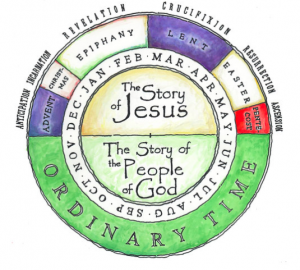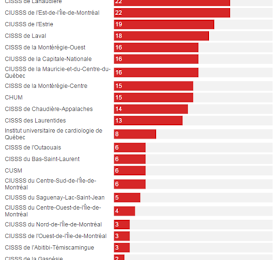No question about it, but in many churches there is not a designated time for the people to pray. Some churches are just too big for that, and even too big for a pastoral prayer. Others are so focused on the sermon that there is not time left for what we Anglicans call the “prayers of the people.”
In our liturgy, every Sunday, we have a time where we are led by a lay person in prayer. It’s called “intercession” or “intercessory prayers” when we pray for others, and when we do it in public it needs to be the sort of intercession that belongs in public. As a seminary student I had one professor whose opening prayers were of such significance that I wish they had gone into print, which of course they didn’t because they were not scripted prayers, but also because Murray Harris knew his class-opening prayers were so tied to that class, on that day, in that time in history that they weren’t relevant to others in different places and times.
Evidently Sam Wells, formerly chaplain, dean and professor at Duke and now Vicar of St Martin-in-the-Fields church in Trafalgar Square, offered memorable prayers in chapel at Duke, so much so that folks began to gather them up and now we have in Shaping the Prayers of the People: The Art of Intercession, by Samuel Wells and Abigail Kocher, a fine study and collection of intercessory prayers.
Question for you who offer intercessions in public: How much time do you spend preparing? What do you think are the ingredients of good public intercessory prayers? And, pastors, do you offer a Pastoral Prayer in your public worship?
Intercession, at its simplest, is speaking to God for the people. And it has come down to us in a time-honored shape in the church’s collects, which “collects” the prayers of the people and pastors and priests into a gathered whole before God. Thomas Cranmer did this for the Anglican tradition, and he used some old Roman prayers and gave them new and memorable life. Here is the collect for purity from the 1979 prayer book:
Almighty God, to you all hearts are open, all desires known, and from you no secrets are hid: Cleanse the thoughts of our hearts by the inspiration of your Holy Spirit, that we may perfectly love you, and worthily magnify your holy Name; through Christ our Lord. Amen.
There are five elements in this historic and church-shaping form of prayer:
1. Address to God
2. Naming a context in which God has been active and therefore why God can be addressed now.
3. The petition.
4. Hoped for outcome.
5. Shaping the prayer in a Trinitarian context.
The absence of pastoral prayers and intercessions has led to a diminishment of trinitarian theology among many of us today.
Wells and Kocher have nothing less than a stunning sketch of what it means to offer intercessions in public through these five themes:
Addressing God: “Part of addressing God is a proper fear of God” (17). To the Father, through the Son, in the Spirit — that’s the core theology of all prayers. [I don’t like to hear people pray to Jesus for that is not how Jesus prayed.]
Hope is at the core of prayer, and this means we need to be immersed in Scripture in order to see how God has acted so we can know how God will act. We need to name God’s faithfulness as the foundation for our intercession.
We need to dare to be imperative before God the Father. The resurrection, the transfiguration and the incarnation form the core of our intercessions. We ask — we don’t hint or suggest or go all vague.
Expect results, spell them out, express our hopes.
Be the change or become the answer to the intercession. Pray for the church to become what God wants it to become.
In their splendid book, Shaping the Prayers of the People, on intercessory prayers in corporate worship, Samuel Wells and Abigail Kocher make a case that we need to be very careful about how we use the word “we.” They illustrate with five groups, for whom the “we” in the congregation/church/service might not apply:
1. Our troops: what if foreigners are present?
2. Our country: same.
3. Our young people (or our older people): what of visitors? or those who have no children?
4. Our children’s children: same
5. Our environment, our world: is the world ours? or God’s?
Their point: this floating “we” nearly always “excludes” others, so be very careful to avoid unless it means all in the Body of Christ everywhere. How often does “we” entail that there is a “they”? In other words, does our “we” result in othering?
They suggest making the intercessions symphonic by picking up phrases, themes, words from what has preceded or what will follow in the service. They suggest the intercessory time can be shaped or influenced by the themes of the sermon to follow.
An intercessor who is well briefed (through being familiar with the contents of the sermon and the assigned music) and well prepared (having looked over the readings and been in touch with the local, national, and international news) can raise the level of a whole service (44-45).
Why ignore what is to come in the announcements? And lists or cycles of prayer in a church calendar can influence the intercession. And the offering, too, and maybe the offering can be seen as a kind of intercession.
When a church is led by someone praying, often called the intercessor, the prayers are to be the prayers of the people more than prayers for the people, though the intercessor may lead the congregation to pray for people in the congregation or the wider church. In Samuel Wells and Abigail Kocher, Shaping the Prayers of the People, we are treated to a basic theology of how to shape the prayers of the people:
1. The prayer is directed to God through every element of word, gesture, bodily posture, and physical space.
Choose a place that evokes speaking to God: not the lectern or the pulpit; perhaps 2/3ds of the back and facing the front as does the congregation; visual images might help. Posture matters: kneeling speaks of one’s posture before God; standing evokes more confidence; if the intercessor is distracted by something (the paper on which he or she reads the prayers), so is the congregation. The intercessor is to invite people to pray, so the time-honored Anglican way: “The Lord be with you. And also with you. Let us pray.” Simple, clear, invitational.
2. The people adopt a posture which trusts the intercessor and believes God will draw near.
The posture matters; closing one’s eyes is an act of trust and humility (and it prevents some distractions); bowed head does the same. Some are asked to stand while others to kneel. Open hands is trustful, too. Prayer stations are sometimes present.
3. The intercessor carries the people’s deepest needs to God, thereby drawing the people more closely into God’s presence.
“The intercessor inhabits a holy place where two praying hands meet” (58): God drawing near to the people and the people drawing near to God. Again, the location of the intercessor can make a difference: in the midst of the people, at the chancel. Silence between petitions can help recollection.





